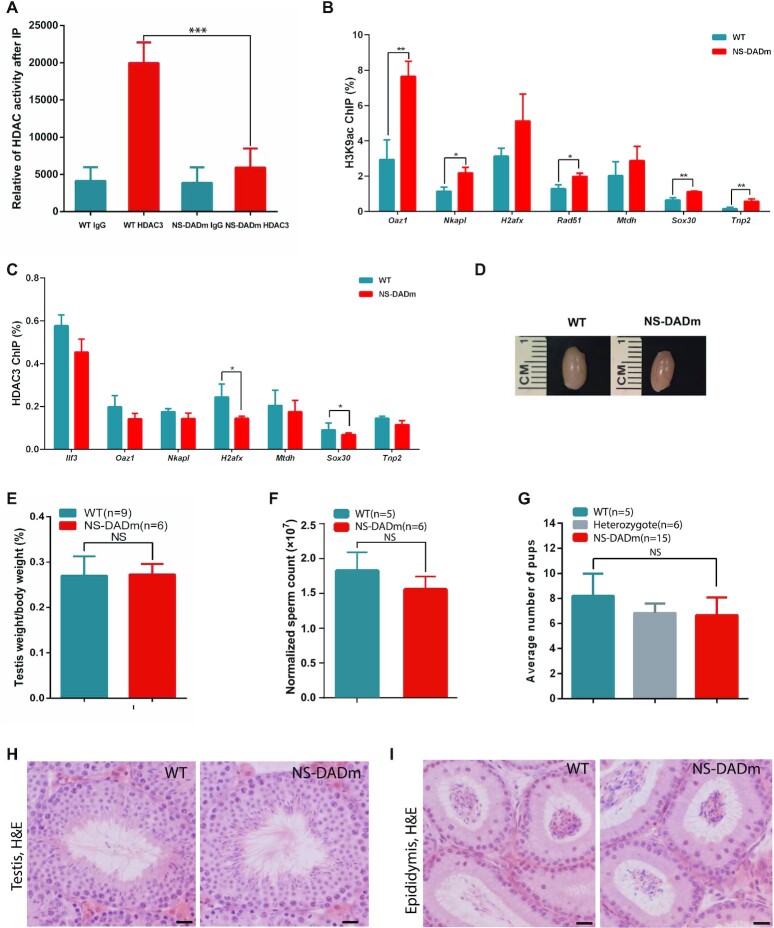Figure 5.
HDAC3 regulates spermatogenesis through deacetylase-independent mechanisms. (A) Testes tissue lysates were immunoprecipitated with either HDAC3 or IgG antibodies, and subjected to HDAC assay. n = 3. (B) The mouse testes from wild type and NS-DADm at postnatal day 20 were subjected to ChIP with H3K9ac antibodies, followed by qPCR analysis at the indicated sites. n = 4 for each genotype. * P < 0.05, ** P < 0.01, Student's t test. (C) ChIP-qPCR analysis of HDAC3 recruitment at the previously-determined sites in wild type and NS-DADm mice at postnatal day 20. n = 4 for each genotype. * P < 0.05, Student's t test. (D) Testis size from 8-week-old wild-type (WT) and NS-DADm. (E) The ratio of testis weight to body weight in WT and NS-DADm. NS, not significant. Wild type, n = 9; NS-DADm, n = 6. (F) The sperm counts obtained from epididymides of 8-week-old wild-type and NS-DADm. Wild type, n = 5; NS-DADm, n = 6. (G) Fertility analysis for adult wild-type, heterozygote, and NS-DAD mutant males. n = 5 for WT; n = 6 for heterozygous; n = 15 for NS-DAD mutants. (H) Hematoxylin and eosin-stained testis sections from 8-week-old wild-type and NS-DADm showed a full spectrum of spermatogenic cells. Scale bar, 20 μm. (I) H&E staining of cauda epididymis from adult wild-type and NS-DADm. Scale bar, 20 μm.

